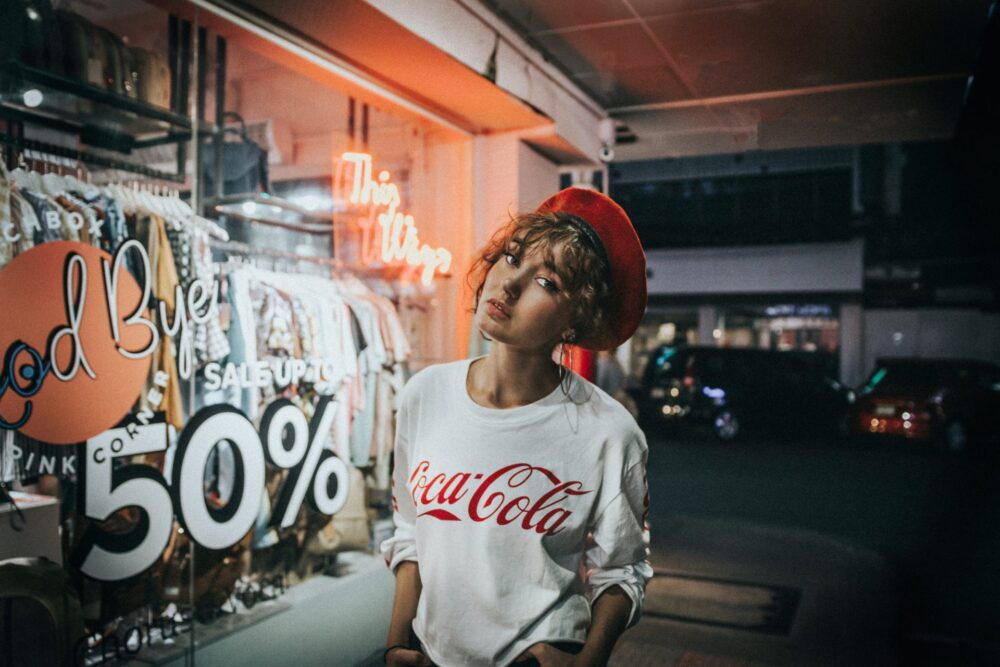
Traditionally reserved for gym-goers and fitness enthusiasts, athleisure and streetwear have become staple outfits in mainstream fashion, pedestalled by comfort clothes becoming everyday wear over the pandemic. As the shops re-opened and more brands began tapping into this trend, a more modern, casual luxury fashion was born, and it’s here to stay.
Heritage brands will face a larger challenge than most; evolving into modern design icons without comprising the brand’s history.
As we know, luxury is ever-changing, and fashion trends constantly come and go. No longer just defined by exclusivity and a show of wealth, everything about luxury is becoming more casual, ranging from dress sense to how these brands connect with their customers.
Golden Goose distressed sneakers (Up to £810) and Balenciaga ‘destroyed’ collections (pieces ranging from £295 – £2,800) demonstrate how luxury brands have begun to test the waters, interpreting casualisation in their own way.
Yet most heritage brands, who are less inclined to follow modern fads, are likely to struggle with this shift in consumer attitude as they will have to go against everything they know.
New fashion calls for new customer narratives
Casualisation can not only be seen in fashion trends, but also in how these retail brands connect with their audiences. 80% of customers expect brands to interact with them on social media, meaning brands need to be aware of how they come across online. Gen Z particularly no longer tolerates non-inclusive brands or patronising tone of voice. Being ‘woke’ or keeping up with online micro-trends in communications can be well received if done originally and tastefully.
Streetwear leader in the US traditionally aimed at skaters and youth cultures, Supreme, set itself apart from others in the casual landscape; putting customers at an advantage when it comes to casual communications, in turn making the brand feel more relatable and accessible to lower-level shoppers. James Jebbia, the company founder, summarises why streetwear brands are winning casual comms: “We’re not trying to over connect ourselves… We’re just trying to show people things that we do.”
If heritage brands capture this same humble sentiment when digitally engaging with their audience, they could be onto a winner.
How to connect with the right audience
Data from MillionaireVue, our quarterly omnibus sampling 500 HNWIs in the UK, US, and China, shows that last quarter over 75% of luxury consumers were open to hearing about clothes and shoes on social media. Nearly 40% are following brand pages to keep up to date with luxury categories like clothes and shoes, accessories, and beauty.
Like streetwear brands, heritage labels should strive to connect with these online audiences in more approachable ways, while remaining appropriate and true to their brand image.
Typically, these brands are often behind the curve and require an extra push to move away from their traditional ways of working, however, some brands are beginning to embrace casualisation. The Burberry x Supreme, and Gucci x Palace 2022 collections are perfect examples of brands offering more casual fashion pieces and brand messaging, while also catering to a more diverse group of luxury consumers.
Summary
Heritage brands will face a larger challenge than most; evolving into modern design icons without comprising the brand’s history.
Nevertheless, this is necessary for brand sustainability in today’s luxury fashion sector. Consumers are shifting from exclusivity to inclusivity; luxury is more widely accessible, meaning luxury brands need to be relevant to a broader audience. With this, brand communications and content must be intriguing but relatable and down to earth. The luxury brands that follow these aforementioned steps will stand the best chance of standing out in the new casual landscape.





